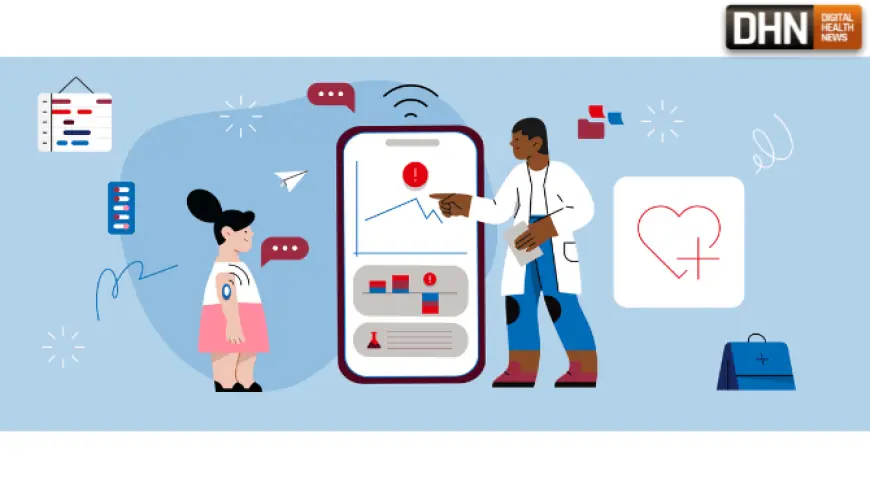Telemedicine Beyond the Pandemic: Long-Term Benefits for Healthcare Providers and Patients
Telemedicine Beyond the Pandemic: Long-Term Benefits for Healthcare Providers and Patients

In recent years, telemedicine, also referred to as telehealth, has experienced a surge in popularity, primarily due to the COVID-19 pandemic. What was once considered a niche service became a lifeline for healthcare providers and patients as in-person consultations became challenging or impossible. Now that the immediate crisis has subsided, the question arises: what is the future of telehealth beyond the pandemic? This article delves into the long-term benefits of telemedicine for healthcare providers and patients, and how it is transforming the healthcare landscape for the better.
What is Telehealth?
Before diving into its long-term advantages, it's important to define what telehealth is. Telemedicine is a broader category that includes remote clinical services, while telehealth encompasses a wider scope, including non-clinical services like administrative meetings, continuing medical education, and even provider training. At its core, telehealth utilizes digital technologies such as video conferencing, mobile apps, and remote monitoring devices to deliver healthcare services without requiring patients to visit a clinic or hospital in person.
The Surge of Telemedicine During the Pandemic
During the early months of the COVID-19 pandemic, telemedicine played a pivotal role in ensuring that patients continued to receive healthcare while maintaining social distancing and minimizing the spread of the virus. Telehealth allowed healthcare providers to conduct consultations remotely, reducing exposure risks for both patients and medical staff.
As the pandemic forced healthcare systems to rapidly adopt telemedicine solutions, many healthcare professionals and patients began to realize the convenience and effectiveness of remote consultations. The sudden shift to telemedicine was a significant turning point for healthcare, and now, as we move beyond the pandemic, it’s clear that telehealth will continue to play a critical role in the healthcare system.
Long-Term Benefits of Telemedicine for Healthcare Providers
- Increased Access to Care
One of the most significant advantages of telemedicine for healthcare providers is the ability to reach patients in remote or underserved areas. Telehealth breaks down geographical barriers, making it possible for specialists to consult with patients who might otherwise have limited access to certain types of care. This is especially important for patients in rural areas, where healthcare providers are often few and far between.
Through telehealth, healthcare providers can expand their reach beyond their immediate geographical location, offering their services to patients from across the country or even globally. This broader patient base can lead to increased patient retention and revenue for healthcare practices.
- Reduced Overhead and Operating Costs
Traditional healthcare facilities incur significant costs related to maintaining physical offices, managing patient traffic, and scheduling in-person appointments. By integrating telehealth into their practices, healthcare providers can reduce overhead costs related to office space, utilities, and administrative staff. These cost savings can be reinvested into improving patient care, upgrading technologies, or expanding services.
Additionally, telemedicine enables providers to optimize their schedules. Rather than requiring patients to come to the clinic for a consultation, providers can allocate time for more remote appointments, improving productivity. This not only saves time but also ensures a more efficient use of resources.
- Better Management of Chronic Conditions
For healthcare providers, managing patients with chronic conditions like diabetes, hypertension, or heart disease has always been challenging. However, with the help of telehealth, patients can regularly monitor their health from home using wearable devices or smartphone applications. These technologies can send real-time data to healthcare providers, allowing for timely intervention when necessary.
For example, a patient with diabetes can use a glucose monitor to track their blood sugar levels, sending the information directly to their healthcare provider. If any issues arise, the provider can make adjustments to the patient’s treatment plan immediately. This proactive approach can prevent complications and improve long-term health outcomes for patients.
- Reduced Burnout for Healthcare Providers
Physician burnout has been a growing concern in healthcare, with long hours, high patient volumes, and emotional stress contributing to this issue. Telemedicine can help mitigate burnout by allowing healthcare providers to work from the comfort of their homes or more flexible environments. Remote consultations reduce the need for back-to-back patient visits and give providers more control over their schedules.
Moreover, telehealth can reduce the stress associated with managing a large patient load in physical settings. With telemedicine, healthcare professionals can offer timely consultations while working in a more relaxed, controlled environment.
Long-Term Benefits of Telemedicine for Patients
- Convenience and Flexibility
For patients, one of the most significant benefits of telemedicine is the convenience it offers. Rather than taking time off work, traveling to a clinic, and waiting in long queues, patients can consult with their doctors from the comfort of their homes. This convenience is particularly helpful for those with mobility issues, caregivers, or individuals with busy schedules who may otherwise struggle to access care.
With telehealth, patients can schedule virtual visits at times that are convenient for them, without disrupting their daily routines. This flexibility also reduces the number of missed appointments and makes it easier for patients to keep up with their healthcare needs.
- Cost-Effective Care
In addition to the convenience, telemedicine often reduces the costs associated with in-person visits. Patients can save on transportation costs, missed work hours, and other indirect expenses. Some studies have shown that virtual consultations can be significantly more affordable than in-person visits, particularly for routine care.
For healthcare systems, telehealth can help streamline administrative processes, reducing the need for clerks and office staff to manage patient appointments and billing. This leads to more affordable care for patients and more efficient practices for providers.
- Improved Health Monitoring and Outcomes
Telemedicine has revolutionized the way patients manage their health, particularly for those with chronic conditions or who need ongoing care. Remote monitoring tools such as wearable fitness trackers, blood pressure monitors, and glucose meters allow patients to continuously track their health metrics. This data can be shared with healthcare providers, who can make adjustments to treatment plans in real-time.
For example, patients with chronic conditions can now engage in proactive care management, rather than waiting for scheduled appointments to discuss any issues. This real-time monitoring can prevent medical emergencies, improve health outcomes, and lead to overall better health management.
- Mental Health Support and Accessibility
Telemedicine has proven to be an essential tool for mental health care, providing patients with greater access to therapy and counseling. Remote therapy sessions allow patients to discuss their mental health concerns in a private, comfortable setting, reducing the stigma often associated with seeking help.
Furthermore, telehealth makes it easier for individuals in underserved communities or those living in remote locations to access mental health professionals. This increased accessibility helps to address the growing mental health crisis by providing support to those who may not otherwise have the resources or access to care.
The Future of Telemedicine: A Lasting Legacy
As healthcare systems around the world continue to recover from the impacts of the COVID-19 pandemic, telehealth remains an integral part of the landscape. It is clear that telemedicine will not fade away but will continue to evolve and expand. The long-term benefits of telemedicine for both healthcare providers and patients are undeniable, and the convenience, flexibility, and efficiency it offers will continue to shape the future of healthcare.
Providers will continue to embrace telehealth as a way to optimize their practices, reduce costs, and enhance patient care. Patients, in turn, will benefit from improved access to care, greater convenience, and more personalized health monitoring. As technology continues to improve and telehealth regulations evolve, we can expect even more innovative solutions to emerge, further strengthening the role of telemedicine in the healthcare industry.
Conclusion
In conclusion, telemedicine offers a wealth of benefits for both healthcare providers and patients that extend far beyond the pandemic. From increased access to care and reduced operating costs for providers to greater convenience and more affordable healthcare for patients, the advantages of telehealth are clear. As we look to the future, telemedicine will continue to be a driving force in healthcare, ensuring that both patients and providers have the tools and resources they need to thrive in a rapidly changing world.
By embracing the long-term benefits of telehealth, healthcare providers can unlock new opportunities for growth, while patients can enjoy improved care and enhanced health outcomes. The future of healthcare is here, and telemedicine is at the forefront of this transformation.
What's Your Reaction?
 Like
0
Like
0
 Dislike
0
Dislike
0
 Love
0
Love
0
 Funny
0
Funny
0
 Angry
0
Angry
0
 Sad
0
Sad
0
 Wow
0
Wow
0



















































